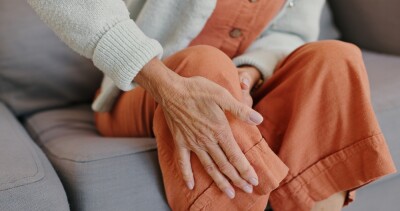Large molecules from dietary fiber can change gut environment through physical forces
Large molecules from dietary fiber, called polymers, can physically influence the environment in the small intestine by causing solid particles to aggregate, according to new research published in the journal eLife.
The study, which used mice, provides new insight on how various types of solid particles found within the small intestine, including microbes, cell debris, particles for drug delivery, and food granules, move together through the gut. The size and composition of such aggregates could potentially affect the gut environment, including how nutrients and drug particles are absorbed during digestion, researchers say.
When particles in the gut form aggregates it can impact the uptake of drugs and nutrients, as well as the function of microorganisms in the gut, but little is understood about how these aggregates form, according to Asher Preska Steinberg, PhD, first author and chemistry graduate assistant at the California Institute of Technology in Pasadena.
A diversity of polymers exists naturally in the gut; they include secretions, such as mucins and immunoglobulins, and dietary polymers, including dietary fibers. It is well known that host-secreted polymers can cause the aggregation of microbes through chemical binding. However, this new work shows that polymers from dietary fiber can also cause aggregation through physical interactions that are dependent on the physical properties of the polymers, such as their molecular weight and concentration, instead of chemical interactions.
"We often think about dietary fibers in the context of nutrition and feeding our gut microbes, but like all polymers, they are also governed by the laws of polymer physics,” said Preska Steinberg. “We wanted to investigate whether physical forces induced by these polymers play a role in structuring particles in the small intestine.”
To do this, the team first studied the interactions between polystyrene particles that were densely coated with polyethylene glycol (PEG), and the contents of the mouse small intestine. PEG-coating has previously been previously used to minimize chemical interactions between particles and biopolymers, allowing the team to focus on the role of physical interactions. They first discovered that the PEG-coated particles, which are commonly used in drug delivery, group together as aggregates within the small-intestine fluid.
Analysis of the fluid later revealed that polymers indeed contribute to the aggregation of PEG-coated particles, and that the extent of aggregation depends on the polymers' concentration and molecular weight.
The team next carried out tests with immunoglobulins and a mucin, called MUC2, on PEG-coated particles. They found that although MUC2 may play a role in the aggregation of PEG-coated particles, it was not required for aggregation to occur.
Instead, the results suggested that aggregation can be controlled using polymers from fibers the mice were eating, researchers say. What's more, this aggregation is tunable. By feeding the mice dietary fibers of different molecular weights, we found that we were able to control aggregation in their intestinal fluid.
This previously underappreciated role of dietary fiber polymers may also occur in the aggregation of other particles in the intestine, and it will be important for us to explore this further.




















SHARE